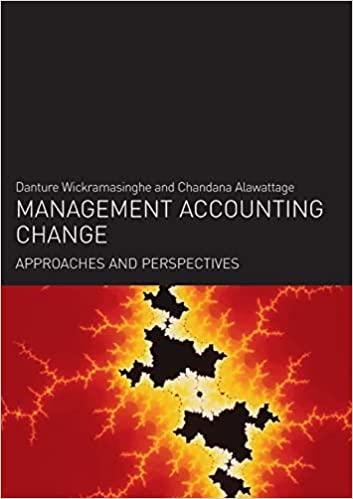Answered step by step
Verified Expert Solution
Question
1 Approved Answer
The events are as follows: a. On December 14, 2011, the auditor discovered that a debtor of Tracy Brewing went bankrupt on July 15, 2011,
The events are as follows: a. On December 14, 2011, the auditor discovered that a debtor of Tracy Brewing went bankrupt on July 15, 2011, due to declining financial health. The sale had taken place January 15, 2011. b. On December 14, 2011, the auditor discovered that a debtor of Tracy Brewing went bankrupt on October 2, 2011. The sale had taken place April 15, 2011, but the amount appeared collectible at June 30, 2011, and August 19, 2011. c. On August 15, 2011, the auditor discovered that a debtor of Tracy Brewing went bankrupt on August 1, 2011. The most recent sale had taken place April 2, 2010, and no cash receipts had been received since that date. d. On August 6, 2011, the auditor discovered that a debtor of Tracy Brewing went bank- rupt on July 30, 2011. The cause of the bankruptcy was an unexpected loss of a major lawsuit on July 15, 2011, resulting from a product deficiency suit by a different customer. e. On August 6, 2011, the auditor discovered that a debtor of Tracy Brewing went bank- rupt on July 30, 2011, for a sale that took place July 3, 2011. The cause of the bankruptcy was a major uninsured fire on July 20, 2011. f. On July 20, 2011, Tracy Brewing settled a lawsuit out of court that had originated in 2008 and is currently listed as a contingent liability. g. On September 14, 2011, Tracy Brewing lost a court case that had originated in 2010 for an amount equal to the lawsuit. The June 30, 2011, footnotes state that in the opinion of legal counsel there will be a favorable settlement. h. On July 20, 2011, a lawsuit was filed against Tracy Brewing for a patent infringement action that allegedly took place in early 2011. In the opinion of legal counsel, there is a danger of a significant loss to the client. i. On May 31, 2011, the auditor discovered an uninsured lawsuit against Tracy Brewing that had originated on February 28, 2011. 24-31 (Objective 24-5) Leslie Morgan, CPA, has prepared a letter of representation for the president and controller to sign. It contains references to the following items: 1. Inventory is fairly stated at the lower of cost or market and includes no obsolete items. 2. All actual and contingent liabilities are properly included in the financial statements. 3. All subsequent events of relevance to the financial statements have been disclosed. a. Why is it desirable to have a letter of representation from the client concerning these matters when the evidence accumulated during the course of the audit is meant to verify the same information? b. To what extent is the letter of representation useful as audit evidence? Explain. c. List several other types of information commonly included in a letter of representation. 24-32 (Objective 24-5) As a part of the audit of Ren Gold Manufacturing Company, a non- public company, management requests basic financial statements and separately, the same basic financial statements accompanied by additional information. Management informs you that the intent is to use the basic financial statements for bankers, other creditors, and the two owners who are not involved in management. The basic financial statements accompanied by the additional information are to be used only by management. Manage- ment requests the inclusion of specific information but asks that no audit work be done beyond what is needed for the basic financial statements. The following is requested: 1. A schedule of insurance in force. 2. The auditor's feelings about the adequacy of the insurance coverage. 3. An aged trial balance of accounts receivable and evaluation of the adequacy of the allowance for uncollectible accounts. 4. A summary of fixed asset additions. 5. Material weaknesses in internal control and recommendations to improve internal control. 6. A 5-year summary of the most important company ratios, with the appropriate ratios to be determined at the auditor's discretion. Required

Step by Step Solution
There are 3 Steps involved in it
Step: 1

Get Instant Access to Expert-Tailored Solutions
See step-by-step solutions with expert insights and AI powered tools for academic success
Step: 2

Step: 3

Ace Your Homework with AI
Get the answers you need in no time with our AI-driven, step-by-step assistance
Get Started


